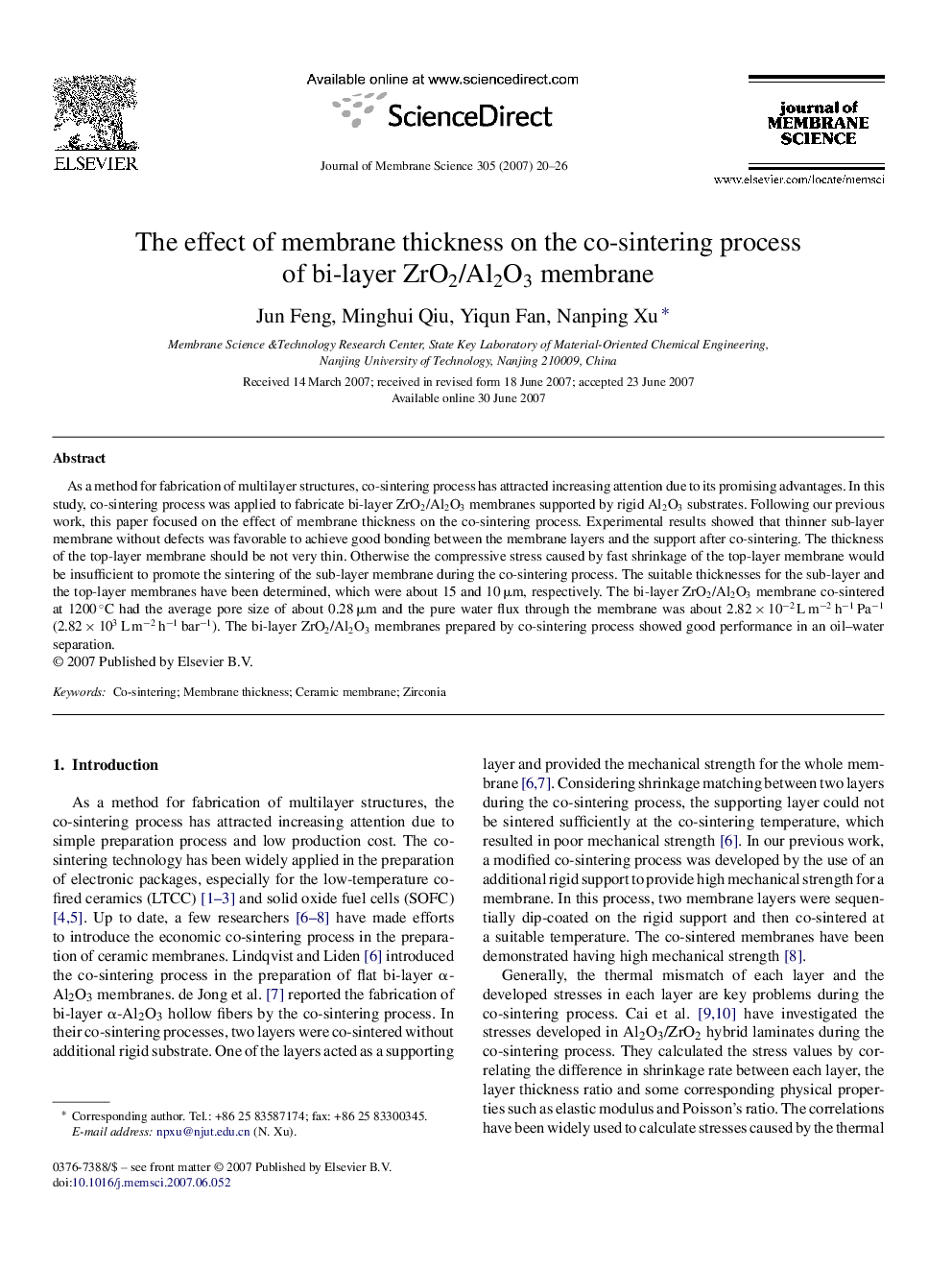| Article ID | Journal | Published Year | Pages | File Type |
|---|---|---|---|---|
| 638290 | Journal of Membrane Science | 2007 | 7 Pages |
As a method for fabrication of multilayer structures, co-sintering process has attracted increasing attention due to its promising advantages. In this study, co-sintering process was applied to fabricate bi-layer ZrO2/Al2O3 membranes supported by rigid Al2O3 substrates. Following our previous work, this paper focused on the effect of membrane thickness on the co-sintering process. Experimental results showed that thinner sub-layer membrane without defects was favorable to achieve good bonding between the membrane layers and the support after co-sintering. The thickness of the top-layer membrane should be not very thin. Otherwise the compressive stress caused by fast shrinkage of the top-layer membrane would be insufficient to promote the sintering of the sub-layer membrane during the co-sintering process. The suitable thicknesses for the sub-layer and the top-layer membranes have been determined, which were about 15 and 10 μm, respectively. The bi-layer ZrO2/Al2O3 membrane co-sintered at 1200 °C had the average pore size of about 0.28 μm and the pure water flux through the membrane was about 2.82 × 10−2 L m−2 h−1 Pa−1 (2.82 × 103 L m−2 h−1 bar−1). The bi-layer ZrO2/Al2O3 membranes prepared by co-sintering process showed good performance in an oil–water separation.
